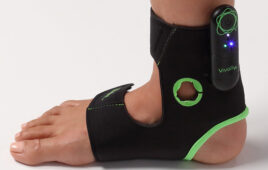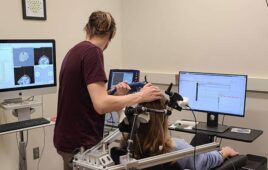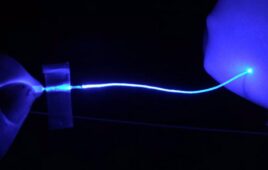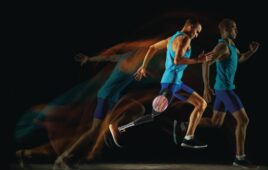SyncThink, a world leader in neuro-technology with foundational intellectual property in eye tracking metrics and devices, announces today the FDA clearance for its first medical device — EYE-SYNC. The EYE-SYNC device is an integrated head-mounted eye tracking device for rapid, reliable recording, viewing and analyzing of eye movement impairment through the use of virtual reality. Abnormal eye movement is one of the most common deficits after a concussion occurs, an assessment EYE-SYNC yields in under 60 seconds.

EYE-SYNC on the field
EYE-SYNC uses high-performance eye tracking technology to monitor eye movement in a handheld virtual reality environment. If your brain is out of sync after an incident, EYE-SYNC can notify the trainer in less than a medical timeout. In collaboration with the Brain Trauma Foundation, SyncThink has developed an eye tracking assessment that measures accurate tracking of predictable visual target motion, an essential brain function.
“In my opinion, the EYE-SYNC device has significant implications for sideline evaluation, and I can see in the future how this can be the diagnostic gold standard for sports related concussion with every pro, college, and high school team having one on the field,” said Scott Anderson, MA, ATC, Director of athletic training for Stanford University Sports Medicine. Anderson continued, “Stanford Sports Medicine currently uses EYE-SYNC technology as an investigational device to screen athletes for concussion and make decisions on return to play.”

EYE-SYNC Device
SyncThink currently has 10 granted patents and a normative database that includes more than 10,000 individuals, as well as more than 40 peer-reviewed research articles characterizing the impact of concussion on visual attention.
“I use the EYE-SYNC device on all my patients in the Stanford Concussion and Brain Performance center. It gives me a rapid and accurate metric to diagnose concussion and recovery,” said Dr. Jamshid Ghajar, Chairman of the Board, Chief Scientific Adviser and Founder of SyncThink.




